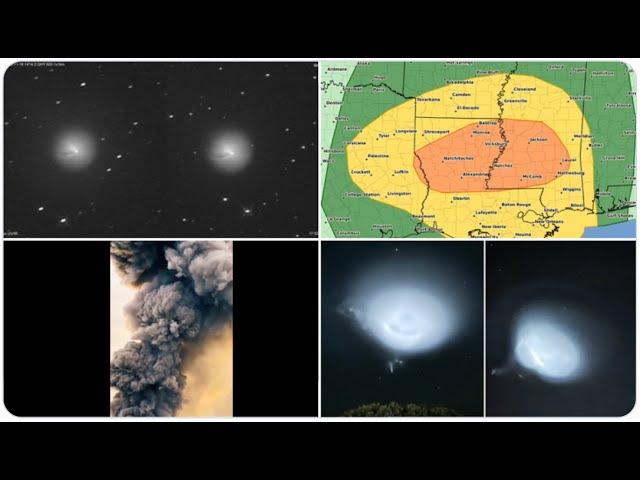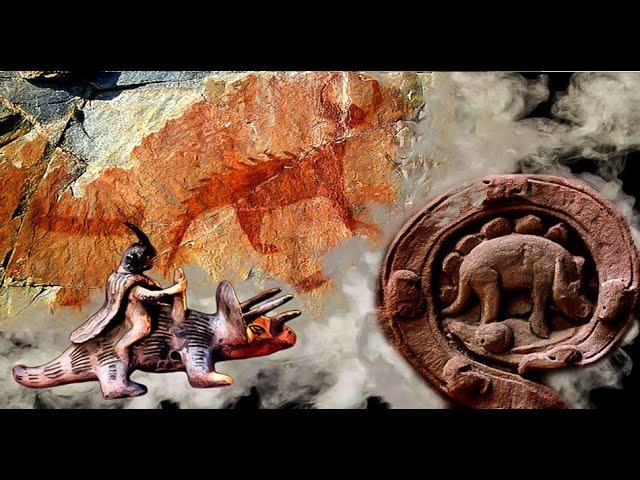What killed the Dinosaurs? Volcanoes? Asteroid? Both? or None of the Above?
Description
The World is a crazy place.
God bless everyone,
T
https://www.paypal.me/THORnews
the article
https://www.universetoday.com/141611/massive-volcanic-eruptions-66-million-years-ago-happened-almost-exactly-when-the-dinosaurs-died-off/
Everyone knows an asteroid strike wiped out the dinosaurs, right? Lots of evidence shows that the Chicxulub impact event had terrible consequences for the dinosaurs. But the picture is a little more complicated than that. Extreme volcanic activity may have contributed to the extinction.
At the end of the Cretaceous period, about 66 million years ago, the dinosaurs went extinct. And not just the dinosaurs; about 75% of all plants and animals went extinct. Avian dinosaurs survived.
At the same time, a massive asteroid or comet slammed into Earth’s Yucatan peninsula, in present-day Mexico. Called the Chicxulub impact event, it clouded the atmosphere with water vapour and with particularly long-lasting dust, due to the structure and type of rock at the impact site.
It’s been easy to conclude that Chicxulub caused the extinction. There’s lots of evidence beyond the impact site itself.
First of all, the extinction itself is called the Cretaceous-Paleogene extinction (K-Pg extinction), because it marked the end of the Cretaceous era and the beginning of the Paleogene period. (It’s also called the Cretaceous-Tertiary extinction (K-T extinction.)
The geologic record contains a sediment layer from 66 million years ago called the K-Pg boundary. The K-Pg boundary is present in both marine and terrestrial rocks around the world. It contains lots of the metal iridium, which is rare on Earth, but abundant in asteroids. The conclusion is that the Chicxulub impact spread iridium into the atmosphere globally, and its now preserved in the geology of Earth, a kind of smoking gun for the impact event.
But there’s growing evidence that volcanic eruptions contributed to the mass extinction 66 million years ago, and that evidence comes from a rock formation called the Deccan Traps. A new study strengthens the link between the K-Pg Extinction and the volcanic activity that caused the Deccan Traps.
The Deccan Traps is a region in India known as a large igneous province. It’s one of the largest volcanic features on Earth. The Traps are multiple layers of basaltic lava, and all together they’re more than 2 km (1.2 miles) thick. The Deccan Traps cover an area of 500,000 km. sq. (200,000 mi. sq.), though at one time they covered as much as 1.5 million sq. km. (600,000 mi. sq.) The volume of the lava is 1 million cubic km (200,000 cubic miles.)
The name “Traps” comes from the Swedish word “trappa” which means stairs. It refers to the step-like structure in the region’s landscape.
There’s more to these Traps than rock though. The amount of volcanic activity required to create the Deccan Traps would have polluted the atmosphere with poisonous gases. Now two geoscientists from Princeton University have drawn a stronger link between the Deccan Traps and the K-Pg Extinction with the first high-resolution timeline for the eruptions that created India’s Deccan Traps. Their research appears in the February 22nd issue of Science.
The two scientists are Blair Schoene and Gerta Keller, both of Princeton University. They led an international team for this study, which tried to date the different layers of the Deccan Traps more precisely than ever before.














